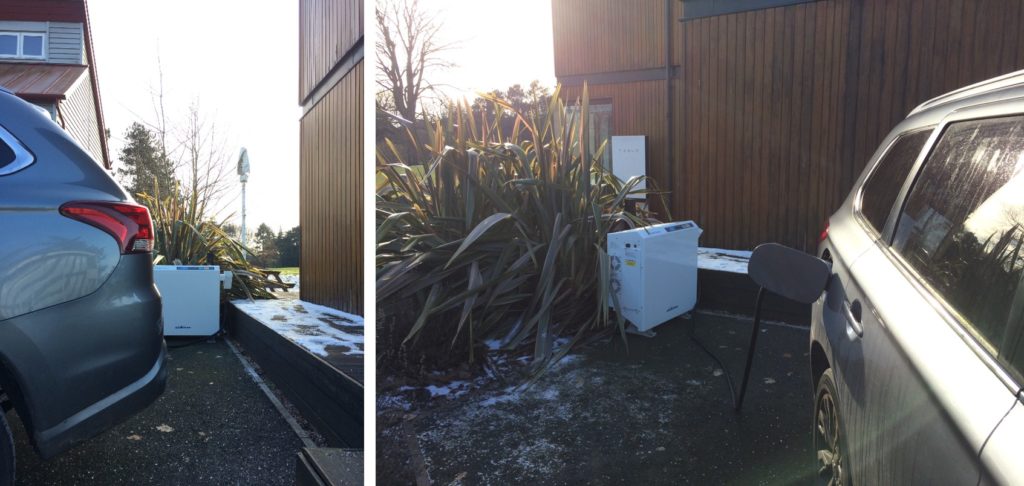Yes, you read it right! we installed the first vehicle-to-grid (V2G) charger at the University of Nottingham, one of the most sustainable universities in the world!
The charger was installed at the Creative Energy Homes (CEH) which is a living test-site on campus for smart-grid energy technologies and zero-carbon buildings. This site is the test bed for systems integrating renewable energy, energy management, energy storage and user behaviour. Adding vehicle-to-grid will introduce the missing part of the equation: the vehicles acting as storage within the energy system.
The Nichicon charger is connected to the energy grid, but more importantly, to the solar energy income. This means that the vehicle’s battery can be charged from the energy grid , but also from energy generated by photovoltaic panels located on the roof of the building.
We are currently developing different charging and discharging profiles to optimise the benefits of vehicle-to-grid. For instance, it will be possible to store excess of energy generated from renewables (locally produced or from the grid). Then, the energy stored in the vehicle’s battery could be sent to the building when the carbon intensity of the grid is high, and the production of renewables is low. By doing this, the vehicle will support the grid by reducing the demand from the building.

EV-elocity will be testing different scenarios for charging and discharging the vehicle’s battery, in order to understand the economic benefits of V2G behind the meter, reduce the carbon emissions from the grid and the vehicles, and optimise the efficiency of the battery.
The installation was done by Stratford Energy Solutions, the back-office was led by CrowdCharge, and the commissioning and networking was done by Hangar 19.
To know more about our installations please keep an eye on our Case Studies posts, follow us on Twitter @EV_elocity and LinkedIn.
Blog by Dr Julie Waldron, Research Fellow, Building, Energy and Environment Research Group & Transport, Mobility & Cities @ Nottingham, University of Nottingham
The Project EV-elocity is part of the Vehicle-to-Grid (V2G) competition, funded by the Department for Business Energy and Industrial Strategy (BEIS) and the Office for Zero Emission Vehicles (OZEV), in partnership with Innovate UK, part of UK Research and Innovation.
In January 2018, OZEV and BEIS announced that 21 projects (8 feasibility studies, 5 collaborative research and development projects, and 8 real-world v2g trial projects) were to receive funding of £30m to develop the business proposition and the core technology to support Vehicle 2 Grid deployment in the UK, including its demonstration with large scale trials.
The projects involve more than 50 industrial partners and research organisations from both the Energy and Automotive sector, marking the largest and most diverse activities on V2G in the world, and trialling more than 1,000 vehicles and V2G charger units across UK.
The V2G projects represent a significant step towards the transition to a low carbon transportation and a smart energy system. Allowing EVs to return energy to the Power Grid when parked and plugged for charging, will increase Grid resilience, allow for better exploitation of renewable sources and lower the cost of ownership for EV owners, leading to new business opportunities and clear advantages for EV users and energy consumers.


